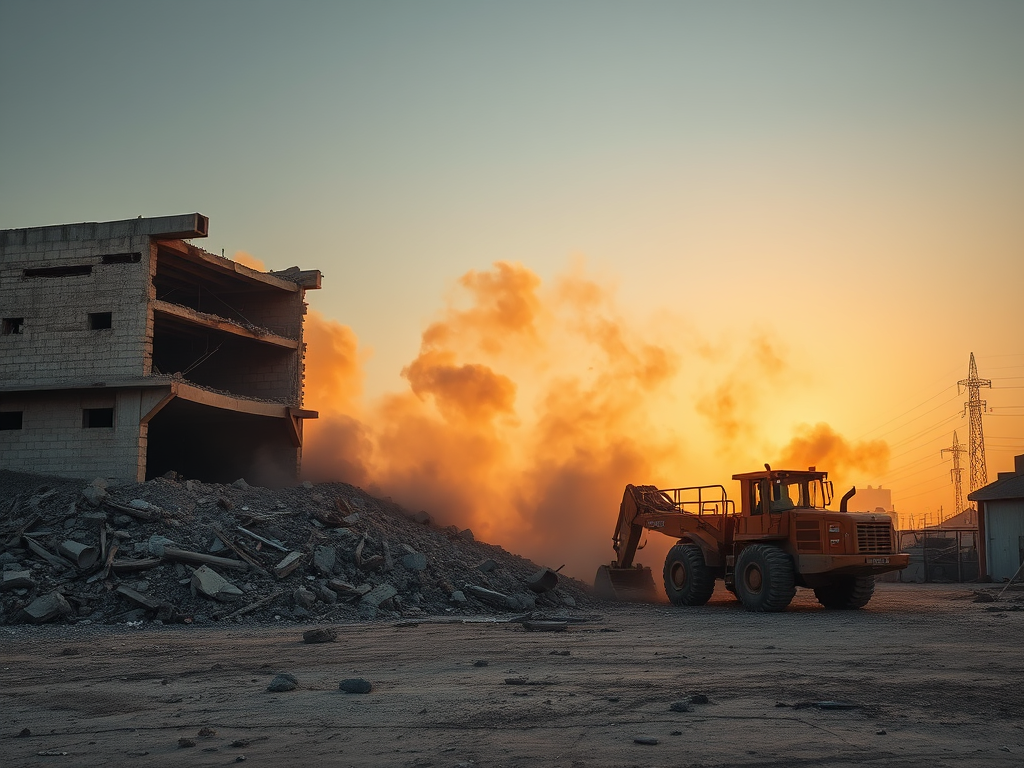
Demolition Safety Interview: 50 Questions and Sample Answers
1. What is demolition safety?
Answer: Demolition safety refers to the precautions and procedures followed to ensure the safe dismantling of structures without endangering workers, the public, or the environment.
2. Why is demolition considered a high-risk activity?
Answer: Demolition involves falling debris, structural instability, hazardous materials, and heavy machinery, making it highly dangerous.
3. What are the common hazards in demolition work?
Answer:
- Structural collapse
- Flying debris
- Exposure to hazardous materials (asbestos, lead, silica)
- Noise and vibration hazards
4. What personal protective equipment (PPE) is required for demolition work?
Answer:
- Hard hats (head protection)
- Safety glasses (eye protection)
- Respirators (dust and fume protection)
- Gloves and steel-toe boots
5. What should be included in a demolition safety plan?
Answer:
- Risk assessment
- Engineering surveys
- Emergency response plan
- Fall protection measures
6. What is a pre-demolition survey?
Answer: It is an inspection conducted before demolition to assess structural stability, hazards, and material types.
7. Why is it important to shut off utilities before demolition?
Answer: To prevent fires, explosions, or electrical shocks from gas, water, or power lines.
8. What are the different types of demolition methods?
Answer:
- Manual demolition (hand tools)
- Mechanical demolition (excavators, bulldozers)
- Implosion (explosives)
9. How do you control dust during demolition?
Answer:
- Use water sprays
- Install dust barriers
- Provide respiratory protection
10. What precautions should be taken when using explosives for demolition?
Answer:
- Conduct blast impact assessments
- Set exclusion zones
- Notify local authorities and the public
11. What should be done if asbestos is found in a demolition site?
Answer: Stop work immediately and contact a licensed asbestos removal contractor.
12. What is the role of a Safety Officer in demolition work?
Answer:
- Conduct risk assessments
- Ensure PPE compliance
- Monitor safe work practices
13. What are the fall protection measures in demolition?
Answer:
- Use harnesses and guardrails
- Install safety nets
- Restrict unauthorized access to elevated areas
14. What are the environmental concerns in demolition?
Answer:
- Air and noise pollution
- Water contamination
- Proper waste disposal
15. How do you prevent falling object hazards?
Answer:
- Install debris netting
- Use controlled demolition techniques
- Secure loose materials
16. What is an exclusion zone in demolition?
Answer: It is a restricted area around a demolition site where only authorized personnel are allowed.
17. How do you safely remove structural elements during demolition?
Answer:
- Work from top to bottom
- Avoid removing load-bearing walls first
18. What is the purpose of a demolition permit?
Answer: It ensures regulatory compliance and verifies that safety measures are in place.
19. How do you prevent structural collapse during demolition?
Answer:
- Conduct engineering surveys
- Remove sections in a controlled manner
20. What are the hazards of using heavy equipment in demolition?
Answer:
- Machine rollovers
- Flying debris from impact
- Struck-by incidents
21. How do you ensure the safety of workers on-site?
Answer:
- Provide safety training
- Use PPE and safety barriers
22. What is an emergency response plan in demolition?
Answer: It includes evacuation procedures, first aid, and emergency contacts in case of accidents.
23. Why is noise control important in demolition?
Answer: High noise levels can cause hearing loss and affect nearby communities.
24. What is the safest way to demolish a multi-story building?
Answer:
- Top-down manual deconstruction
- Mechanical demolition in stages
25. How do you handle hazardous waste in demolition?
Answer:
- Identify and segregate hazardous materials
- Dispose of waste as per regulations
26. What safety measures should be followed when using a wrecking ball?
Answer:
- Maintain a clear swing radius
- Use trained operators
27. What is selective demolition?
Answer: The controlled removal of specific parts of a structure while preserving others.
28. What is structural shoring in demolition?
Answer: It is the temporary support of unstable structures to prevent collapse.
29. How do you prevent exposure to lead in demolition?
Answer:
- Use lead-safe work practices
- Provide respirators and protective clothing
30. What should be done if a wall unexpectedly collapses?
Answer:
- Evacuate the area immediately
- Call for emergency assistance
31. How do you manage fire risks in demolition?
Answer:
- Remove flammable materials
- Keep fire extinguishers on-site
32. What precautions should be taken when working at heights in demolition?
Answer:
- Use fall protection equipment
- Maintain stable work platforms
33. Why is worker communication important in demolition?
Answer: Clear communication prevents accidents, miscoordination, and injuries.
34. How do you safely dispose of concrete debris?
Answer:
- Use dump trucks or skips
- Follow waste disposal guidelines
35. What is the danger of dust inhalation in demolition?
Answer: It can cause respiratory diseases such as silicosis.
36. What precautions should be taken when cutting steel structures?
Answer:
- Use fire-resistant PPE
- Ensure proper ventilation
37. What are confined space hazards in demolition?
Answer:
- Lack of oxygen
- Toxic gas accumulation
38. What is the purpose of structural bracing in demolition?
Answer: It prevents sudden collapses by reinforcing weak structures.
39. How do you minimize vibration hazards in demolition?
Answer:
- Use controlled demolition techniques
- Monitor ground movement
40. What is the importance of proper signage in demolition?
Answer: It warns workers and the public about dangers.
41. How do you protect adjacent buildings during demolition?
Answer:
- Install protective barriers
- Monitor ground movement
42. What should be done before starting a demolition project?
Answer:
- Conduct a risk assessment
- Secure permits and approvals
43. How do you prevent slips, trips, and falls in a demolition site?
Answer:
- Keep work areas clean
- Use anti-slip mats
44. Why is ventilation important in demolition sites?
Answer: It removes dust, fumes, and harmful gases.
45. What should workers do in case of an explosion?
Answer:
- Take cover immediately
- Follow emergency procedures
46. How do you ensure heavy equipment safety in demolition?
Answer:
- Train operators properly
- Conduct regular maintenance
47. What are the risks of underground utilities in demolition?
Answer: Electric shocks, gas leaks, and water damage.
48. How do you safely demolish load-bearing walls?
Answer: Use gradual removal methods and structural support.
49. What is the importance of site cleanup after demolition?
Answer: It prevents trip hazards and ensures site readiness for next steps.
50. What are the legal requirements for demolition work?
Answer: Compliance with OSHA, local building codes, and environmental laws.
Oil and Gas Safety Interview: 50 Questions and Sample Answers
Construction Safety Interview Questions and Sample Answers
Hot Work Safety Interview: 50 Questions and Sample Answers
Hydrotest Safety Interview: 50 Questions and Sample Answers
Radiography Safety Interview: 50 Questions and Sample Answers
























